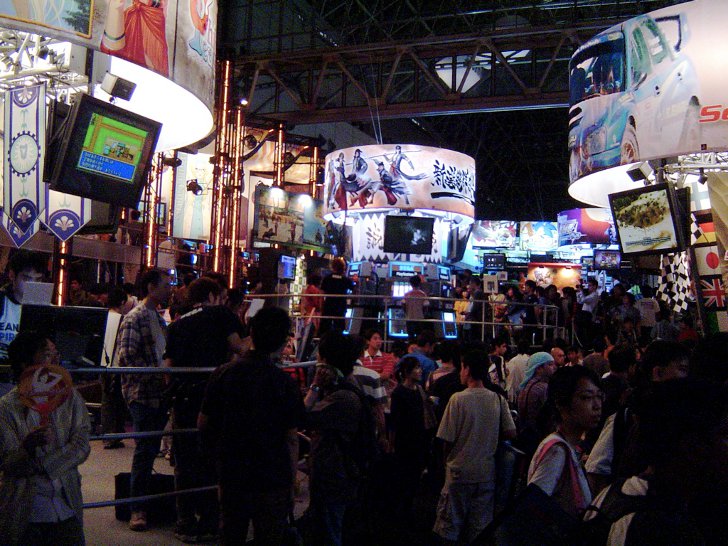Tokyo Game Show (TGS) was founded in 1996. It used to be held twice a year in the Tokyo Big Sight exhibition center. In 2002, the organizers decided to hold the show annually and canceled the convention’s spring edition. Since then, TGS has been held every autumn. As we’ve already mentioned, the main focus of the convention is on Japanese video games. However, some international video game developers come to TGS to showcase upcoming releases or related hardware.
Tokyo Big Sight is known for its large scale. Its occupies several exhibition areas in the Makuhari Messe convention center. For example, the 2015 show showcased 11 exhibition areas: General Exhibition, Asia New Sales, Merchandise Sales, Smartphone and Social Games, Personal Computing, Children, Game School, Sales, Cosplay, Business Solutions, and Cloud/Data Center. Each year, the show features approximately 150-200 exhibitors from over 30 countries. Attendance exceeds 200,000 (286,446 as of 2015).
During the first several days, Tokyo Game Show is open only for industry representatives, journalists and media. The general public is allowed to attend during the final two days. At TGS, attendees can see the latest video games and any related products or services (gaming consoles, portable gaming devices, controllers, headphones, game-related merchandise, smart devices, etc.). The programming also includes educational seminars dedicated to game development and offers information about programs of study related to the video games industry in Japanese universities.
Many well-known companies such as Sony Computer Entertainment, Capcom, Namco Bandai and Square Enix have demo areas at TGS. Emerging companies showcase their products as well. In 2012, the organizers even introduced a special exhibition designed to introduce emerging game developers from the Asian region. The convention also attracts many cosplay fans including top cosplayers from Japan.
In 2020 and 2021, the event was held online due to the coronavirus pandemic.

Photo by Calton, Wikimedia Commons




